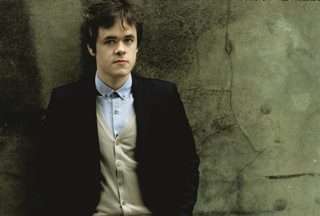|
Back
Orchestre symphonique de Montréal Pays Homage to Richard Strauss Montréal
Maison symphonique de Montréal, Place des Arts
09/21/2014 - & 23* September 2014
Richard Strauss: Death and Transfiguration, Op. 24 – Sinfonia Domestica, Op. 53
Camille Saint-Saëns: Piano Concerto No. 2 in G Minor, Op. 22
Benjamin Grosvenor (Piano)
Orchestre symphonique de Montréal, Kent Nagano (Conductor)

B. Grosvenor (Courtesy OSM)
This week Kent Nagano and the Orchestre symphonique de Montréal (OSM) gave their third consecutive concert with works they will play on their Asian tour in October. It will be their first visit to China and their tenth to Japan. The concert was dedicated to the memory of Franz-Paul Decker who died on May19. A well-known Strauss specialist, Decker was the fifth music director of the OSM from 1967-1975. He was also the first to bring the orchestra to Asia, where he conducted three concerts at the Universal Exposition of 1970 in Osaka.
Death and Transfiguration is the fourth of nine programmatic tone poems composed by Strauss. These were written between 1886 and 1915 and pushed the concept of realism in orchestral music to the limit. Death and Transfiguration, one of the shorter tone poems at about 25 minutes, depicts a man on his deathbed. As he is dying, his thoughts turn to the life he lived–from childhood innocence, struggles of manhood, attainment of worldly goals–and the transfiguration after death. Strauss was a master of program music (music that suggest events in real life) and this work succeeds brilliantly. The OSM’s performance had some good moments–warm, glowing strings (including harps) depicting childhood innocence; a tumultuous exposition suggesting the struggles of manhood with burnished, authoritative playing from the trombones and trumpets; and a denouement with melancholic support from the double basses. (These were positioned stage right in front of the horns which were almost impossible to hear from the left-side of the hall.) Nagano could have maintained a better balance between the brass and the rest of the orchestra, and he needn’t have held back in the climaxes–this is Strauss after all.
The second tone poem on the program, Sinfonia Domestica, his last and one of the longest at about 45 minutes, suggests the daily life of the Strauss family. Themes suggest papa Strauss, mama (his wife Pauline) and child, for which Strauss used an obsolete instrument not used since Bach’s day, the oboe d’amore. Again, the performance was pleasant enough–fine work from solo trumpet Paul Merkelo and the woodwinds, and riveting solos from concertmaster Andrew Wan. Nagano brought a light, lazy beat at the beginning to depict papa; whimsy to the love scene; delicacy to the cradle song and a blistering frenzy to the final section. Overall, however, the performance could have benefitted from more cohesion. It also lacked a burnished sound.
In between, the young British pianist, Benjamin Grosvernor, performed a felicitous Saint-Saëns Piano Concerto No. 2 (not scheduled on the tour) with finesse, clarity, exquisite technique and a lightness of touch.
Readers can follow the progress of the OSM tour on their blog at www.osm.ca/blog.
Earl Arthur Love
|